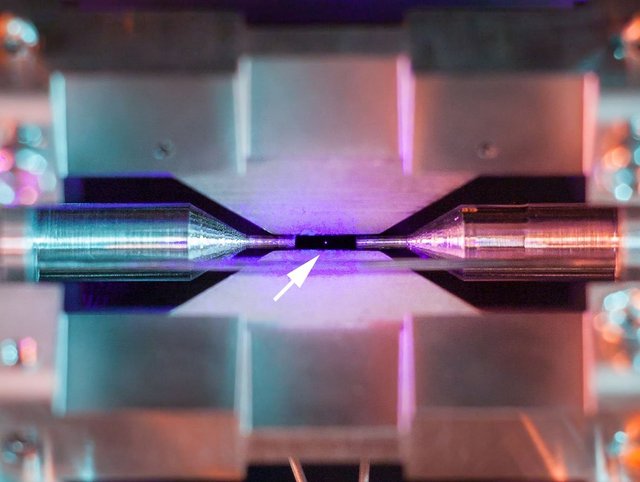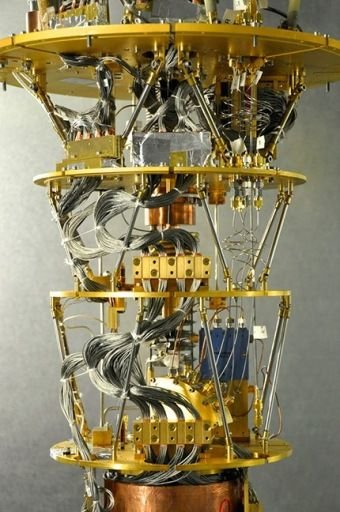
They created an artificial atom 0.01 millimeters in size and put it on the side of a superconducting material.
How is an atom? The usual graphic representations give an approximate idea of their appearance, but it is difficult to imagine them in practice without a photo showing their real appearance.
That is precisely what David Nadlinger has achieved, a photographer who managed to capture an impressive image after "catching" a strontium atom (Sr) between the electric fields generated by two metal electrodes separated by two millimeters.
"Single Atom in an Ion Trap"
The photography, entitled "Single Atom in an Ion Trap", has won the first prize of the prestigious scientific photography contest organized by the Engineering and Physical Sciences Research Council (EPSRC) of the United Kingdom.
The image became the chosen one among more than 100 candidates for the EPSRC photo contest, and the author in the photography information explained the procedure with which he managed to get that image:

In the center of the image, a small bright spot is visible - a strontium atom with unique positive charge. It remains almost motionless because of the electric fields that emanate from the metallic electrodes that surround it. [...] When illuminated by a laser of the appropriate blue-violet color, the atom absorbs and re-emits light particles fast enough so that a normal camera can capture it in a long-exposure photograph.
Nadlinger explained how the image was captured through the window of a vacuum chamber at the University of Oxford. To achieve this, he highlighted how laser-cooled atomic ions provide "a pristine platform to explore and take advantage of the unique properties of quantum physics."
The photo, taken on August 7, 2017, was taken with a Canon 5D Mark II DSLR, a Canon EF 50mm f / 1.8 lens, and the help of a pair of flashes with various colored gels for that final image. In the official announcement of the EPSRC you can obtain more information and check what the rest of the award-winning photographers were, many of which are equally amazing.
We have opened a new door to the quantum world, listening to the atoms and talking to them, "described the discovery by Per Delsing, one of the co-authors of the study." Our long-term goal is to learn quantum physics in order to benefit from its laws, for example, create super-fast computers "
The NASA expert says that quantum computers would also be very useful for coordinating the work of 'rovers' that operate on other planets, such as Curiosity on Mars. Biswas says that these systems would help 'rovers' to explore, for example, various types of rocks.
Interestingly, quantum computers could also be used to develop learning algorithms so that they can play an important role in the development of artificial intelligence.
With these big objectives on the table, Biswas predicts that quantum computers in the future will behave like processors connected to classical computers. "Which is extraordinary," says the author of the article. "It will be like giving steroids to your personal computer," said Biswas.

With these big objectives on the table, Biswas predicts that quantum computers in the future will behave like processors connected to classical computers. "Which is extraordinary", which means that "It will be like giving steroids to your personal computer," said Biswas.